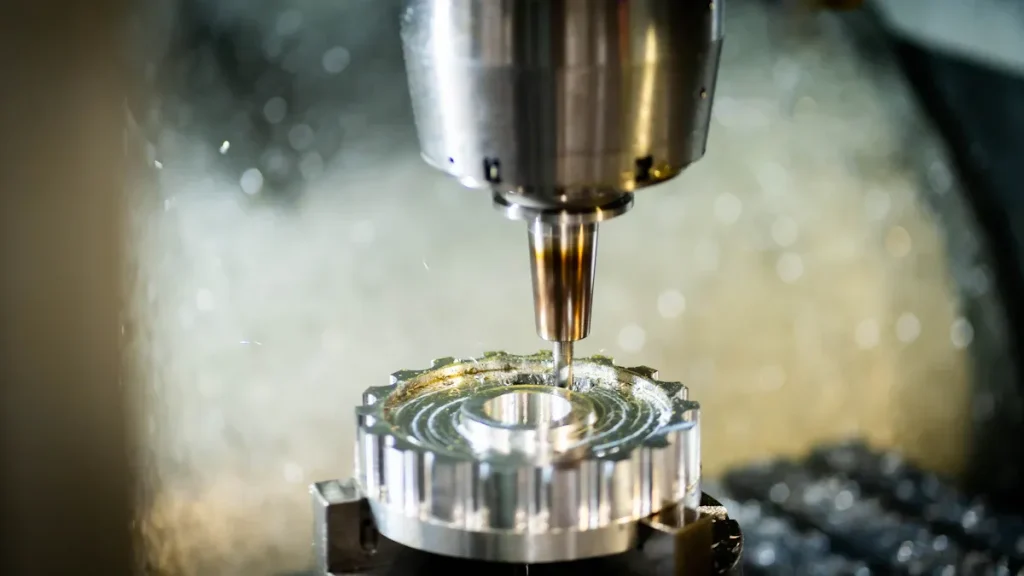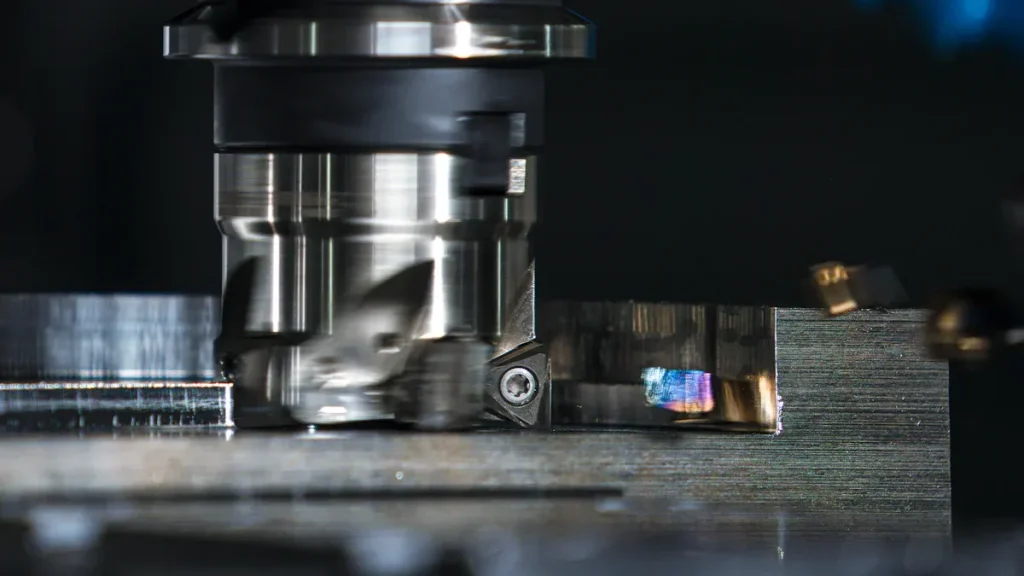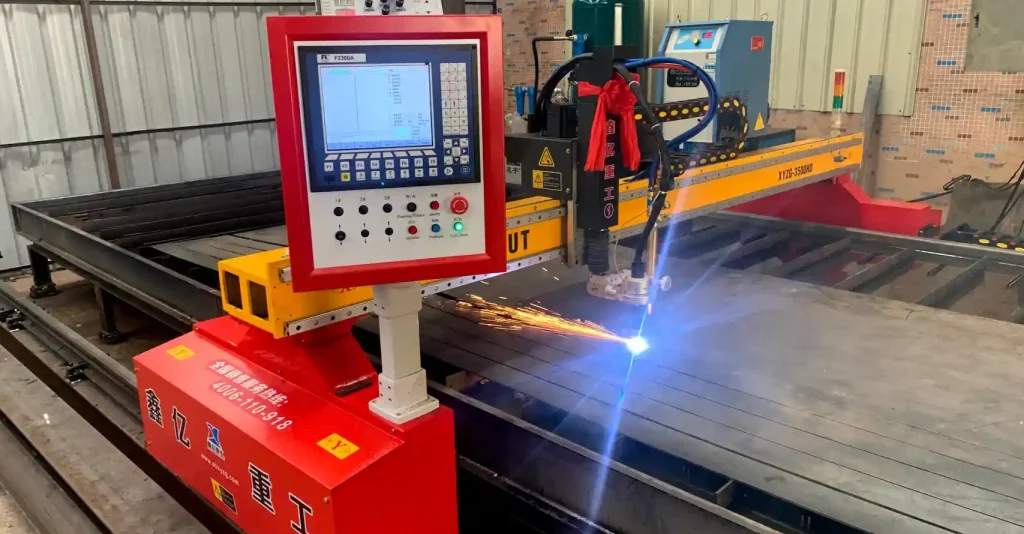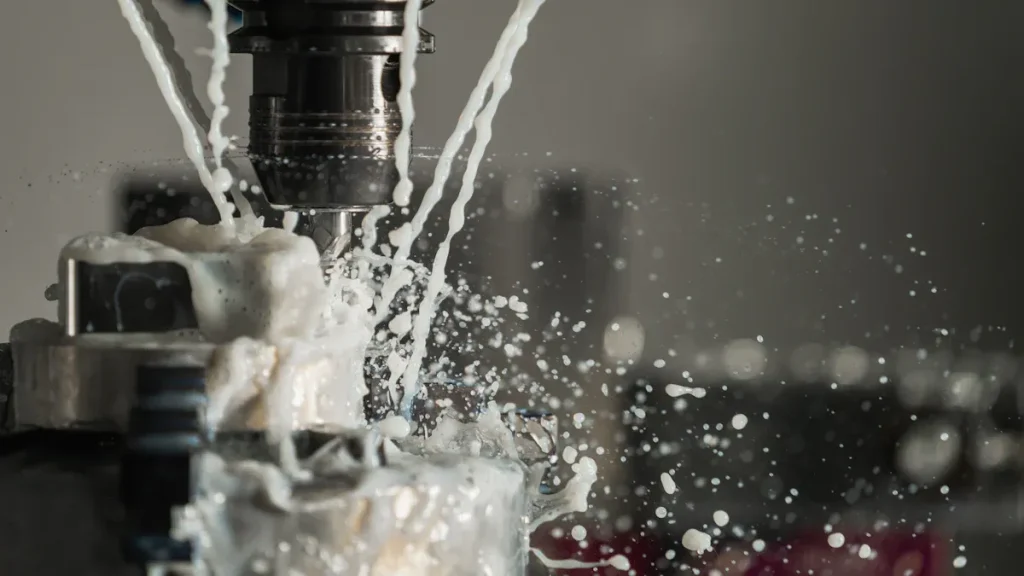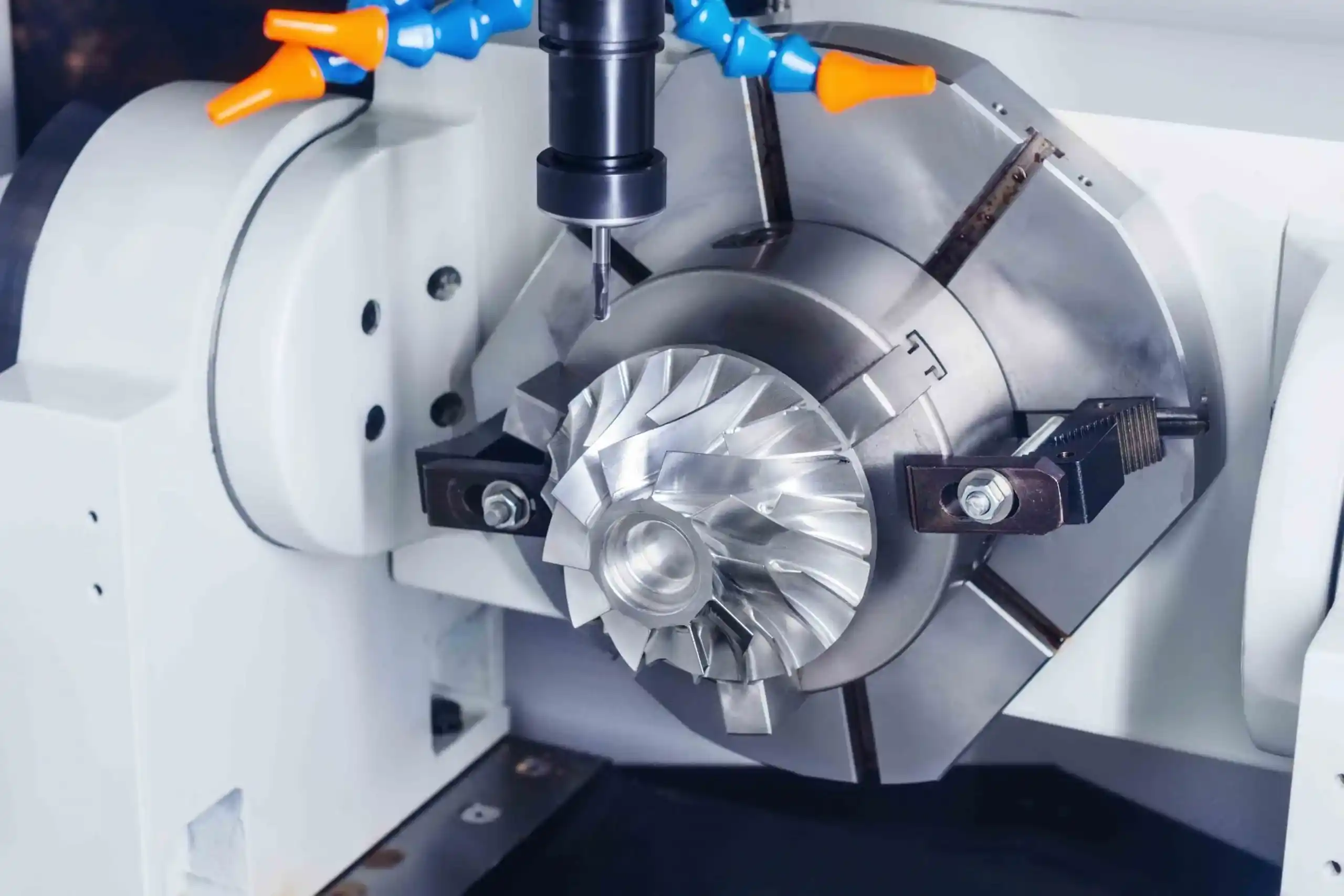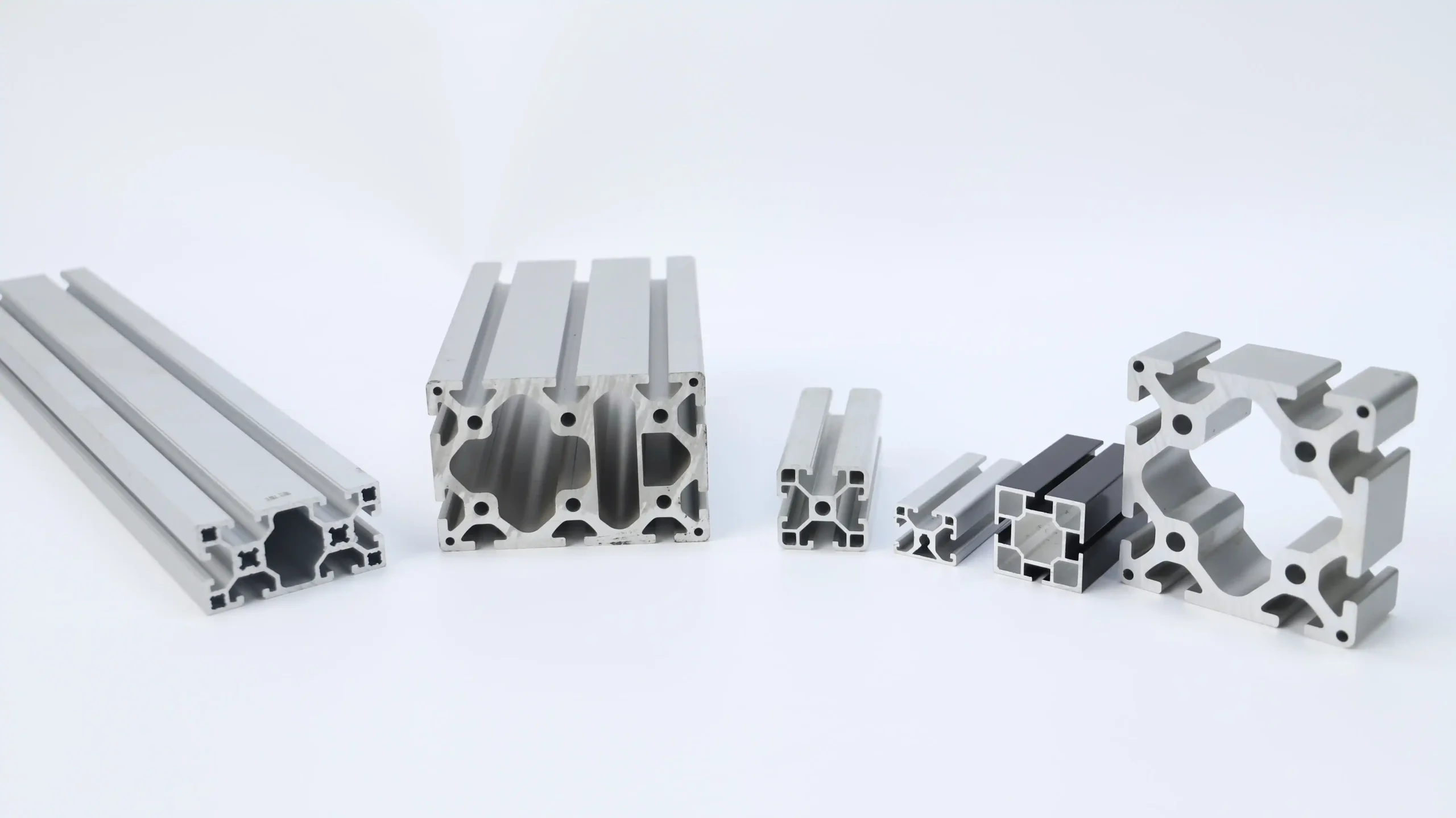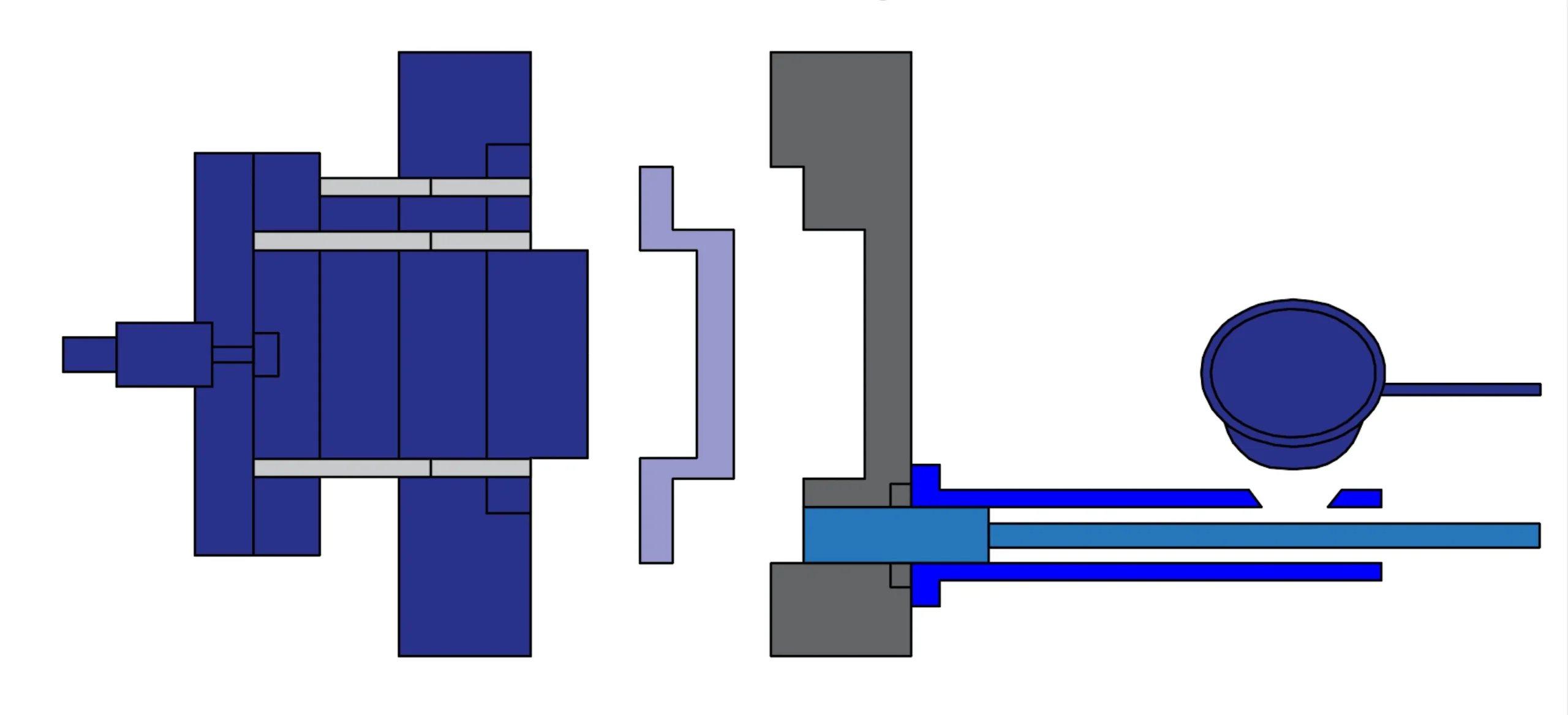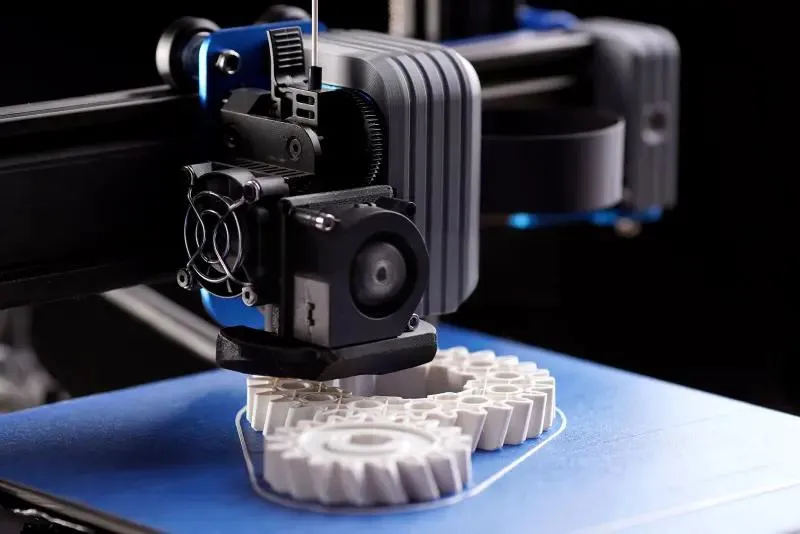CNC machining is a process in which parts are machined by computer-controlled machines. It prices machining to an accuracy of ±0.0002 inches. This allows people to make fine designs that cannot be done by hand.
Industries such as automotive and aircraft use CNC machining because it is reliable and can handle large jobs. For example, the CNC machine tools market is likely to grow from $101.22 billion in 2025 to $195.59 billion by 2032. This growth is due to the demand for fast and precise manufacturing. CNC machining is also important because it can be used for a variety of purposes.
Key Takeaways
- CNC machining utilizes computers to run machines for accurate part manufacturing.
- Automation helps CNC machines work faster and reduce errors.
- CNC machines are categorized as mills, lathes, and routers.
- CNC machines can shape metals, plastics, and many other uses.
- The machining process includes steps such as design and quality checks.
How CNC Machining Works
Computer Programming and Automation
CNC machining utilizes computers to control how the machine works. First, CAD software is used to digitize the design. Then, CAM software is used to translate the design into machine instructions. These instructions tell the machine tool exactly how to move.
Modern programming makes CNC machining more precise and consistent. For example:
- New programming languages allow for better control of machine movements.
- CAD/CAM systems ensure that designs are very accurate.
- Adjustments during machining improve product quality.
Automation is very important in CNC machining. Intelligent systems keep the machine running at all times. This increases production and reduces delays. It also helps to meet high demand while remaining efficient. Automation improves safety by reducing errors and accidents.
CNC machines have many components that work together to ensure accuracy. Each component has its own role in the machining process:
- Machine bed: Keeps the machine stable and reduces wobble.
- Spindle: Rotates the tool, affecting the surface and accuracy of the material.
- Control Panel: Reads commands and runs the machine. Advanced panels have additional functions.
- Axes (X, Y, Z): Move in three directions to create detailed designs.
- Motors and Drives: Convert power into motion. Servo and stepper motors are very precise.
- Ball Screws and Linear Guides: Help parts move smoothly and minimize wear.
- Tool Changer: Automatically switches tools to save time and labor.
- Cooling system: Cools the tools and extends their service life.
- Sensors and Feedback Devices: Detect accuracy and increase safety.
These components work together to ensure that CNC machining is always accurate.
Step-by-Step Machining Process
CNC machining follows a step-by-step process of converting a design into a product:
- Design Creation: The part is designed using CAD software. This sets the shape and size of the part.
- Programming: The design is translated into G-codes that the machine understands. These codes tell the machine how to move.
- Machine Setup: Secures the material to the machine and loads the tools.
- Machining: The machine cuts or shapes the material according to the G-codes. It may take several passes to achieve the perfect result.
- Quality Control: The finished part is inspected to make sure it meets the design requirements.
Each step is important to ensure accurate and reliable CNC machining.
Types of CNC Machines
CNC machines are suitable for different jobs. Understanding them can help you choose a more suitable machine for your product. Here are three common types: CNC mills, CNC lathes and CNC routers.
CNC Milling Machines
CNC milling machines are suitable for making fine parts. They use rotary tools to cut material from the workpiece. These machines are used in industries such as automotive, aircraft and electronics. Not only do new milling machines work faster, they also handle more complex tasks.
Technology has made milling machines better. For example:
- Industry 4.0 integration: Machines share data to improve productivity.
- Artificial intelligence toolpath assistance: Easier programming for new users.
- Better material handling: More types of materials can be handled.
| Evidence | Description |
|---|---|
| CNC Machine Demand | High demand due to their accuracy and speed. |
| Automation Perks | Saves time, boosts output, and improves workflows. |
These same features are what make CNC milling machines the key to the modern factory.
CNC Lathes
CNC lathes create round parts by rotating the material while cutting it. They are used in industries such as automobiles and airplanes. These machines can create items such as shafts and pulleys very accurately.
CNC lathes are efficient because of these factors:
| Metric | Description |
|---|---|
| Cutting Speed | Affects how fast the cutter works. |
| Feed Rate | Controls how quickly material moves into the cutter. |
| Material Removal Rate (MRR) | Shows how much material is cut in a set time. |
| Tool Wear and Tool Life | Tracks how long tools last, saving costs. |
| Part Quality Rate | Measures how many good parts are made. |
Modern lathes utilize automation to reduce errors and maintain consistent quality. This is what makes them perfect for busy factories.
CNC Routers
CNC routers can cut and shape materials such as wood, plastic and soft metals. They can be used for furniture, signs and even medical tools. These machines can create detailed designs that are difficult to accomplish by hand.
CNC routers are superior to older methods because:
- Getting the job done faster saves time.
- Reduces material waste and lowers costs.
- Even complex designs can be completed accurately.
These machines are very helpful in industries that require precision. Whether you are making furniture or medical tools, CNC routers provide excellent results.
CNC Plasma Cutters
CNC plasma cutters are machines that cut metals such as steel, aluminum and brass. They use ultra-high temperature plasma to melt the metal and blow it away with compressed gas. This results in a clean and precise cut.
How CNC Plasma Cutting Machines Work
It works by creating a channel of hot gas called plasma between the cutter and the metal. The plasma reaches temperatures as high as 30,000 degrees Fahrenheit, melting the metal immediately. The machine’s computer system guides the plasma torch to cut as designed. This allows you to create fine shapes and patterns with ease.
Advantages of CNC Plasma Cutting Machines
CNC plasma cutters have many advantages that make them ideal for cutting metal:
- Speed and Efficiency: Cutting is faster than older methods, saving time.
- Cost Effective:
- Intelligent software allows for good planning of cuts, which reduces material waste.
- Precise cuts mean less extra work is required, which saves money.
- Automation reduces labor costs and increases production.
- Material efficiency: Precision cutting rationalizes material use and reduces waste.
- Versatility: They can cut a wide range of metal types and thicknesses for different jobs.
Application of CNC plasma cutting machine
CNC plasma cutting machines are flexible and efficient and are therefore used in many applications. They are commonly used for
- Cutting metal sheets for buildings.
- Making customized automotive parts
- Designing metal artwork and furniture
- Making parts for heavy machinery.
These machines are a must for industries that require precise metal cutting. If you need to customize your product, Future Parts offers precision and fast service.
Materials Used in CNC Machining
CNC machining can process many types of materials. This is what makes it a flexible way to manufacture parts. The choice of material depends on the needs of the project. Factors such as strength, weight or longevity should be considered. The following are the main types of materials used.
Metals (e.g., aluminum, steel, titanium)
Metals are the most used materials in CNC machining. They are strong, durable and very precise. Aluminum is lightweight and will not rust, making it ideal for use in cars and airplanes. Steel is very strong and is commonly used in tools and machines. Titanium is both strong and lightweight, making it ideal for medical parts and high-tech products.
Plastics (e.g. ABS, polycarbonate)
Plastics are also commonly used in CNC machining. They are lightweight, inexpensive, and easy to mold.ABS is hard and inexpensive, so it is often used for prototypes and everyday items. Polycarbonate is stronger and can withstand impacts, making it suitable for safety equipment and electronics.
Plastics are great for creative design. They work well for parts that don’t need to be as strong as metal, but need to be bent or insulated.
Advantages and Limitations of CNC Machining
Advantages
CNC machining has many advantages, which is why it is popular in factories. It is very precise so that the part matches the design exactly. This not only reduces errors but also improves the quality of the product. Even with tricky designs, CNC machines give reliable results every time.
These machines are also very efficient. Automation helps to speed up work compared to older methods. They require less labor, which reduces costs. CNC machines can run day and night to produce more and meet deadlines.
Another big advantage is scalability. Whether you need one part or thousands, a CNC machine can do it all. No matter how heavy the workload, CNC machines remain accurate and efficient.
| Advantage | Description |
|---|---|
| Precision | CNC machines cut down errors, saving materials and reducing flaws. |
| Efficiency | Automation speeds up production and lowers labor costs. |
| Scalability | Machines run nonstop, boosting output for large projects. |
Limitations
CNC machining also has some disadvantages. It is the high cost of purchasing and installing these machines. This can be difficult for small businesses or hobbyists. Skilled workers are needed to program and repair the machines, which also adds to the cost.
Some materials are also difficult to use with CNC machines. While it works well with metals and plastics, soft or fragile materials may break. So there is also a need to choose materials that fit the machine’s capabilities.
Programming also takes time. Translating designs into machine instructions can be slow for complex tasks. So CNC machining is not suitable for quick, one-off projects.
Applications of CNC Machining
Aerospace and Automotive Industries
CNC machining is very important for airplanes and automobiles. These industries require great care and precision in manufacturing parts. CNC machines can create strong materials such as high-grade alloys for airplane parts. These parts include turbine blades and frames.
Automakers use CNC machining to make lighter cars. Lighter cars save fuel, which is very important today. CNC machines can machine tricky parts such as engines and gear systems.
| Industry | Key Benefits |
|---|---|
| Automotive | CNC machining helps make lighter cars that use less fuel. |
| Aerospace | CNC machines create strong materials for safe airplane parts. |
Medical Device Manufacturing
Doctors need extremely precise tools and equipment. CNC machining helps create small parts such as implants and surgical tools. For example, it creates guide wires with minute details that are used in surgery. To be safe to use, these wires must be extremely precise.
It also makes parts for medical testing equipment. These parts must be clean and precise, and CNC machining ensures this. This technology can machine complex shapes perfectly. This has changed the way medical devices are manufactured.
Electronics and Consumer Goods
CNC machining can also be used to make parts for electronics and everyday items. It can make parts for cell phones, computers and appliances. These parts fit together perfectly and allow the product to last longer and work better.
In the consumer goods sector, it can also manufacture unique designs and test new ideas. This is very useful for companies that create new products quickly.
Conclusion
CNC Machining Services are pivotal in today’s manufacturing industry. It utilizes intelligent machines to create fine, precise parts for applications in industries such as aircraft, automotive, and medical devices. It does so with excellence, no matter how big or small. Whether you’re producing one piece or many, CNC machining delivers exceptional results. With CNC machining, you can turn your ideas into real products with amazing precision.
FAQs
What does CNC mean?
CNC stands for Computer Numerical Control. It describes machines that are run by a computer program. These machines automate tasks such as cutting, drilling, and molding materials.
What is the principle of cnc machining?
CNC machining is an automated manufacturing technology controlled by a computer program and is widely used for precision machining of metals, plastics, wood and other materials. Its core principle is to drive the machine tool to complete cutting, drilling, milling and other machining tasks through digitized instructions.
How accurate are CNC machines?
CNC machines are very accurate, typically within ±0.0002 inches. This accuracy ensures that the part will match the design, even for delicate or complex shapes.
What is G-code?
G-code (Geometric Code) is an instruction language used to control CNC machines such as mills, lathes, laser cutters, etc. G-code allows the CNC system to be used as a control system. With G-code, the CNC can precisely control the direction and path of tool movement, the machining speed (feed rate), the spindle speed and the machining process (e.g. tool change, cooling, pause).

